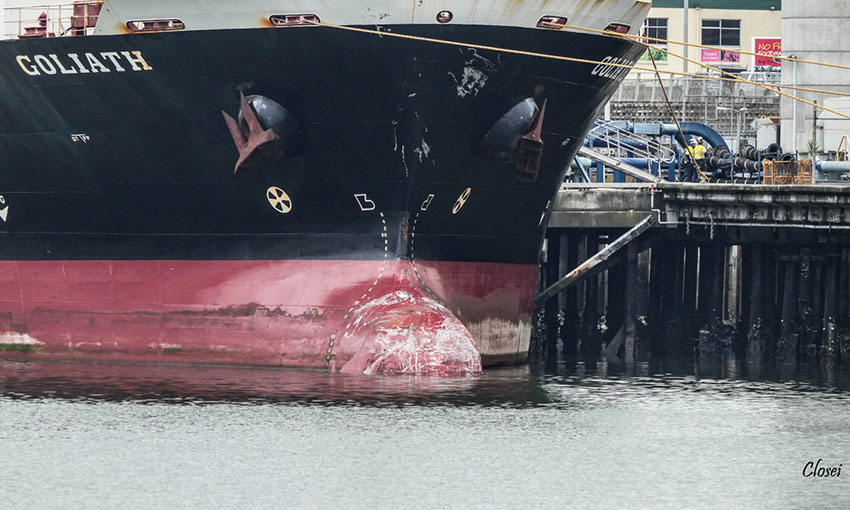THE response continues at the Port of Devonport after Friday’s incident in which the cement carrier Goliath allided with two tugs, sinking them and damaging a wharf.
CSL Australia, which operates Goliath, confirmed the incident to DCN, saying it happened at about 1150 local time on 28 January.
The company said the cement carrier was not carrying cargo at the time of the incident and it is currently alongside at Devonport, having sustained “minor damage”.
“Repairs on the ship are currently being carried out under the direction of AMSA and the CSL technical team,” the company said.
“CSL has been actively co-operating and working alongside the relevant authorities to investigate the root cause of the incident. We thank local organizations and authorities who are assisting in providing support, including TasPorts, AMSA, ATSB and EPA.
“Goliath and her crew are proud, long-standing members of the Devonport maritime community and CSL regrets any disruptions or inconveniences caused as a result of this incident.”
Response and investigation
On Saturday, the Tasmania Environment Protection Authority declared the incident as a Level 2 marine pollution incident. The EPA defines a Level 2 incident as complex likely to have impacts on public health and/or the environment.
On Saturday the EPA estimated that 10,000 cubic litres of oil had already been removed from the Mersey after oil-spill equipment was deployed.
The Australian Transport Safety Bureau has opened an investigation into the incident.
A spokesperson for the Australian Maritime Safety Authority said the organisation is working alongside, and in co-operation with, the ATSB to investigate the incident.
“As investigations are underway, it would be inappropriate to comment further or speculate about the outcome of those investigations at this early stage,” an AMSA spokesperson said.
“AMSA is also supporting EPA Tasmania to manage the pollution response effort following the incident. AMSA has provided drift modelling as well as expert technical advice for the response.
“We understand Tasmanian authorities have also accessed the National Plan pollution equipment stockpile in Devonport.”

Third tug moved
Meanwhile, TasPorts has removed the tug Wilga from the incident site and oil-spill containment area. Wilga was berthed next to Campbell Cove and York Cove, the two tugs that sank in the incident.
TasPorts said its teams had been working “around the clock” to manage the incident.
TasPorts chief operating officer Stephen Casey said significant planning over the past few days was integral in the successful extraction of the third tug from the containment area earlier today.
“At the time of the incident, a third tug – Wilga – was alongside, narrowly avoiding the collision. In response to the incident, TasPorts teams mobilised quickly and deployed oil spill response equipment within 45 minutes of the collision, which captured the third vessel in the containment area,” he said.
“A plan was developed under the guidance and direction of the Environmental Protection Authority to enable the tug’s extraction, whilst minimising impact to the port and potential oil dispersal.
“The plan saw Wilga towed from the containment area as a dead ship by tug Watagan from the Port of Burnie, minimising disruption to contaminated water. Additional controls were also put in place for the towage operation by TasPorts harbour master to ensure the ongoing integrity of the oil spill containment,” Mr Casey said.
“The extraction of the tug was only possible due to the success to date of the oil spill response and perfect environmental conditions early this afternoon.”
Following the removal, the tug will now undergo sea trials to confirm no damage was sustained due to Friday’s incident before returning to normal service.





